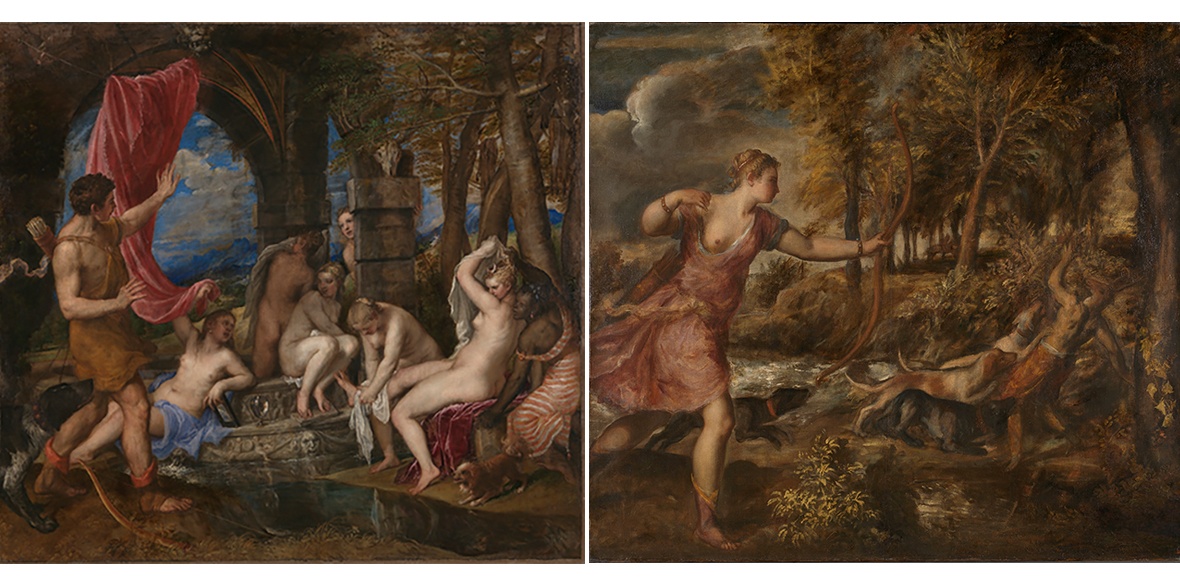This is the last article you can read this month
You can read more article this month
You can read more articles this month
Sorry your limit is up for this month
Reset on:
Please help support the Morning Star by subscribing here
Titian: Love, Desire, Death
National Gallery, London
IN 1551 Philip, the future King of Spain, commissioned the Italian artist Tiziano Vecelli —Titian — to paint six canvases based on classical myths.
The resulting “poesie,” or painted poems, are based loosely on classical myths, derived from translations of the Roman poet Ovid’s Metamorphoses by his friend Lodovico Dolce.
The power of these moral tales creates engrossing narratives and the skill of Titian’s execution is breathtaking, with an exquisite use of colour, both vibrant and subtle.
There are bubbling springs, reflections in pools, gathering storm clouds in the distance and silken curtains wafting in gentle breezes.
In one of the key pieces in this small but mighty exhibition the youth Actaeon, looking for cool shade, stumbles upon Diana and her handmaidens.
A 21st-century viewer may take a cynical view of this young man discovering the one spot in a forest which held a group of naked women.
Yet Ovid declared that “destiny was to blame for Actaeon’s misfortunes, not any guilt on his own part; for there is nothing sinful in losing one’s way.”
The poet would have made a good defence lawyer, though this particular client did get turned into a stag. His fate is foretold by Titian’s placing of a stag’s skull and skins in the setting as a kind of stigmata.
The nymphs display numerous facial expressions and poses — Titian had written to Philip, promising that he’d be showing him a selection of naked women in this erotic tableau and “sin” in these tales, falls on them.
Callisto is undone, literally, when Diana insists that her trusty nymphs bathe naked. Stripped violently, she is clearly nine months pregnant. Jupiter had disguised himself as Diana to lure and rape the girl.
There is no compassion — Titian renders Diana imperious and haughty, pointing an accusing finger, while her victim writhes on the ground. The painting is divided, with the goddess and her entourage on the right, the poor pregnant girl to the left.
It’s as much about class as an affront to Diana’s chastity. The mortals don’t survive well in their encounters with these deities.
It’s somewhat sad that this rare chance to see the work of one of the world’s finest artists — and his constant experimentation is a marker of the development of art during the period, with Velazquez, Rembrandt and Rubens all inspired by him — comes at a time when few are venturing out to galleries.
It’s particularly unfortunate as this is the first time the canvases can be seen together since they were first delivered to their patron.
Yet a positive in the gallery having so few visitors is that it is possible to spend more time immersing yourself and letting the paintings work on the senses and emotions — none more so than the overwhelming sense of injustice and pity induced when viewing the depiction of the ostracised Callisto.
Runs until January 17, box office: nationalgallery.org.uk.











